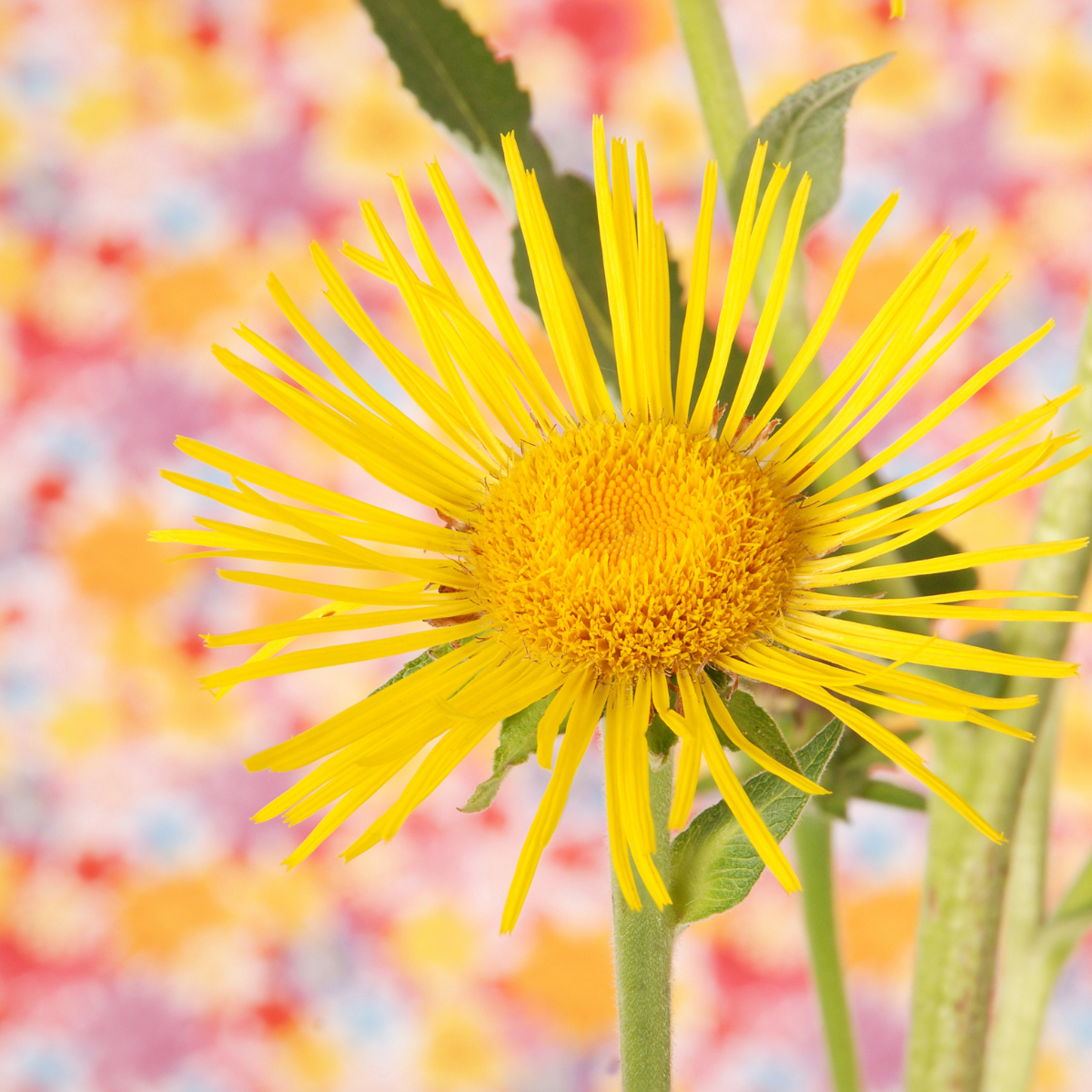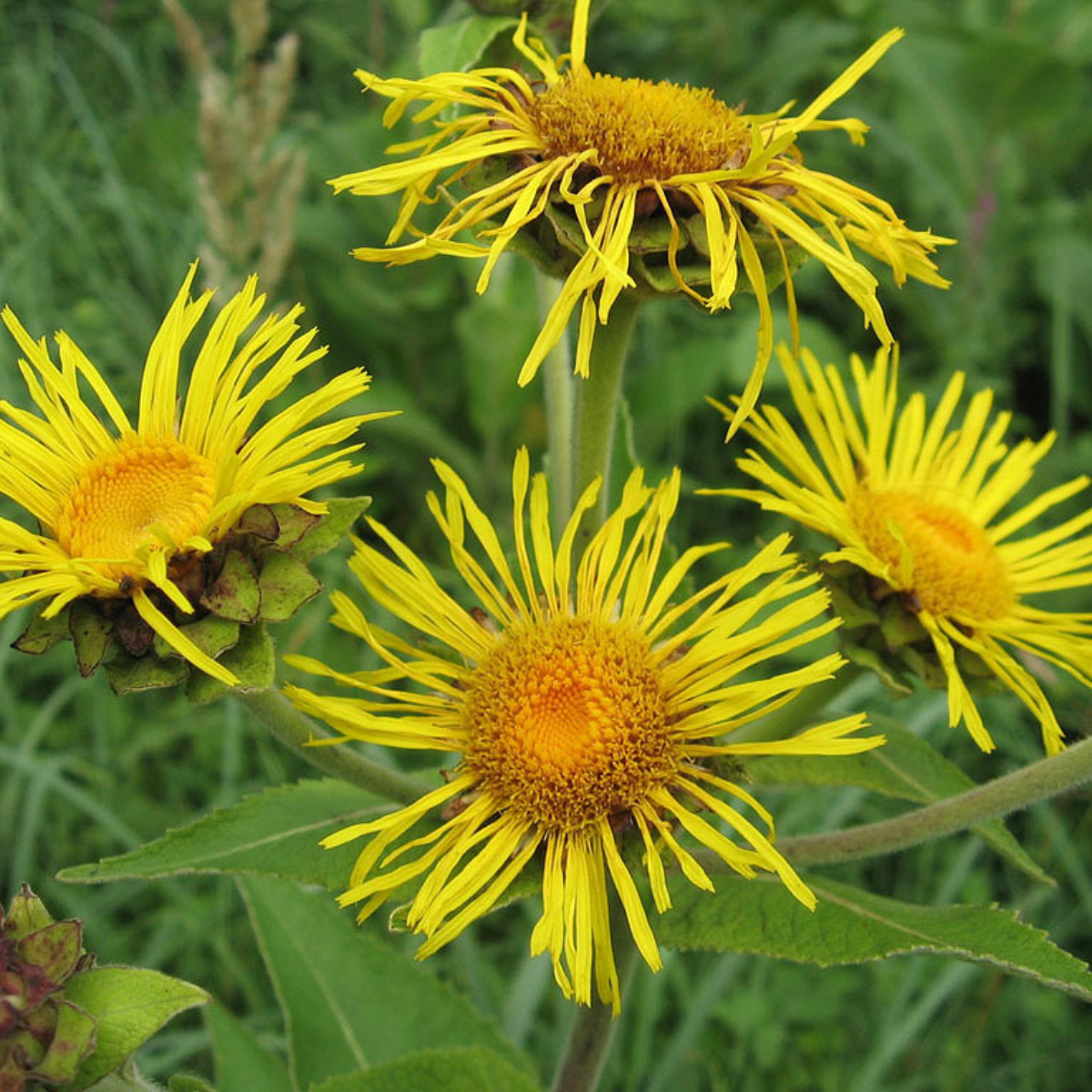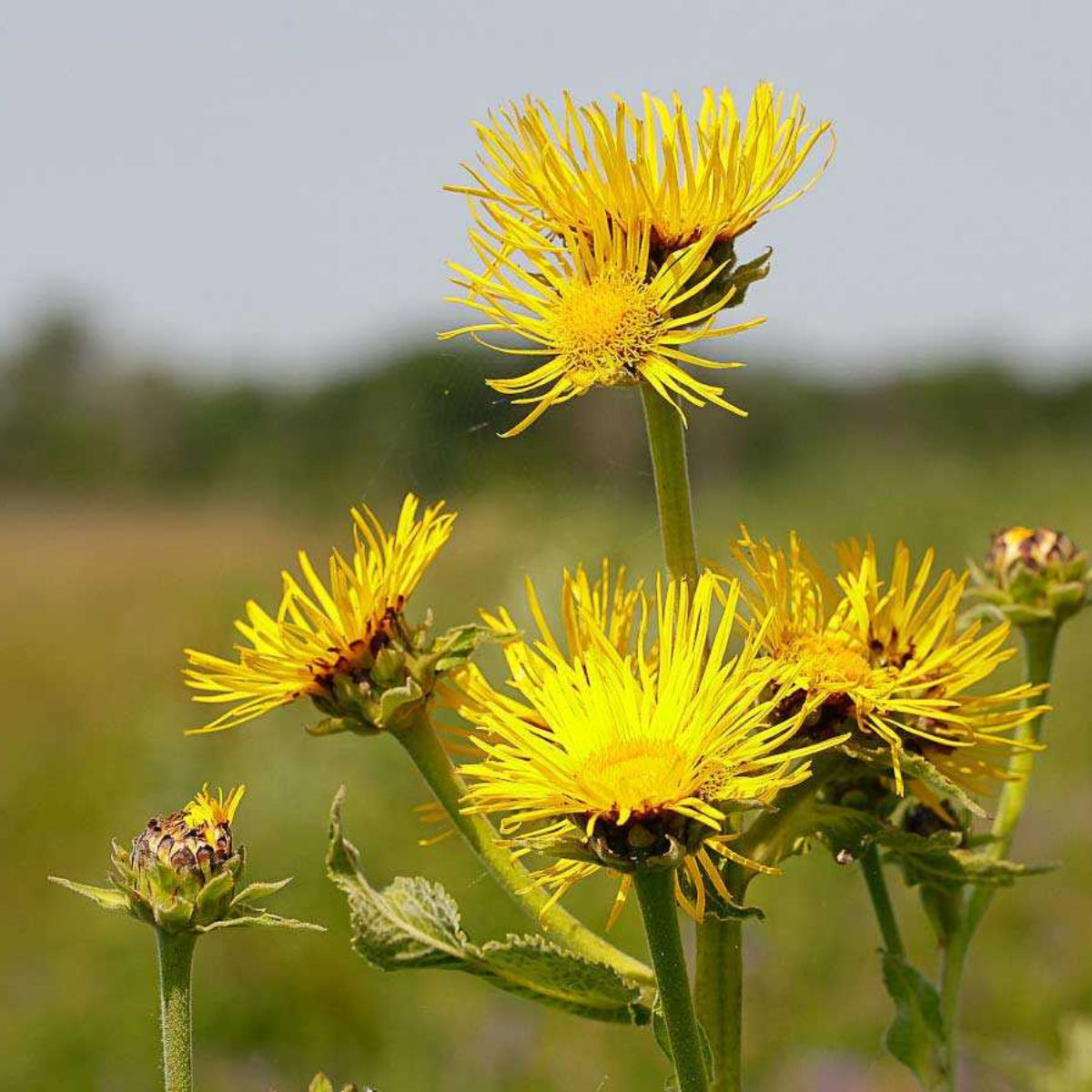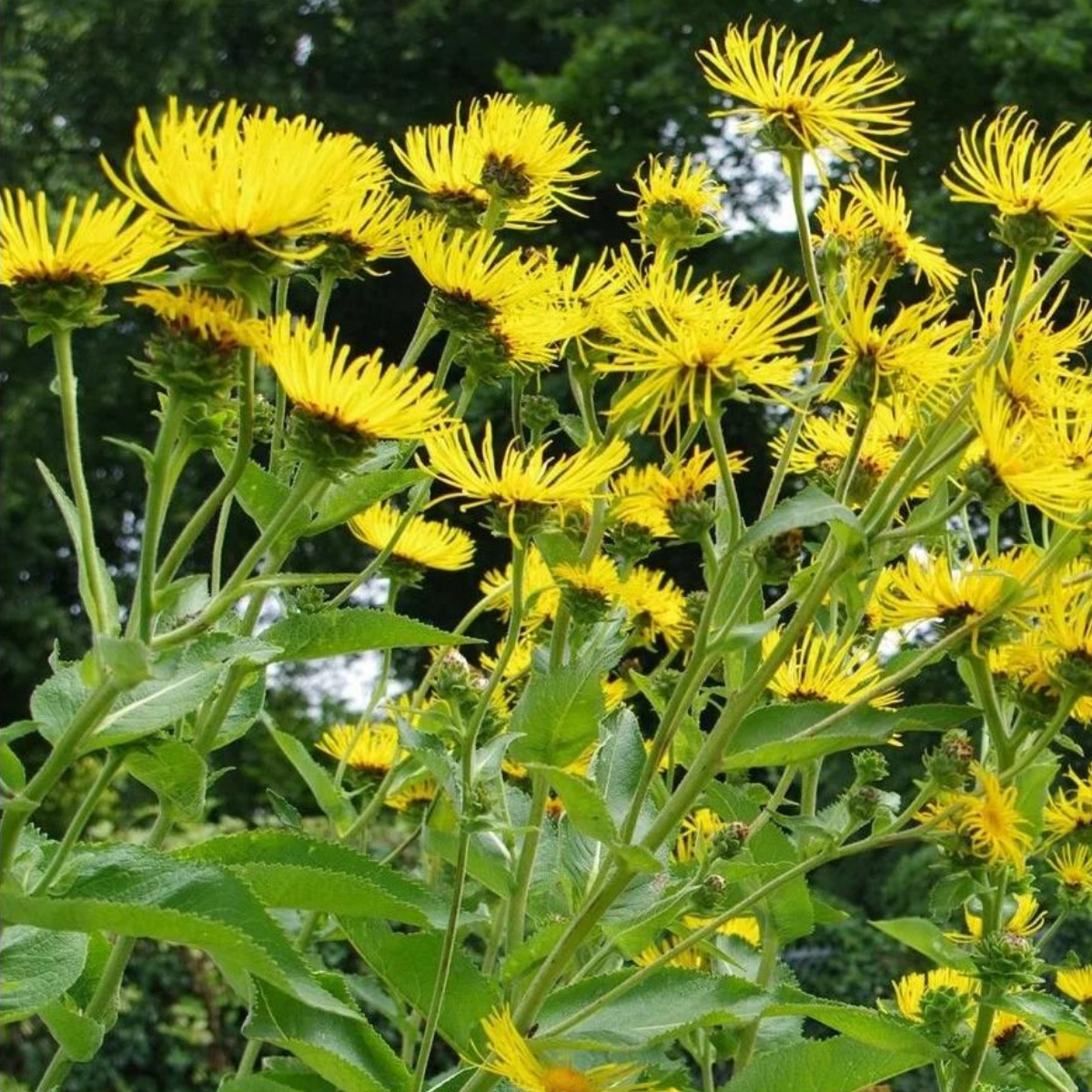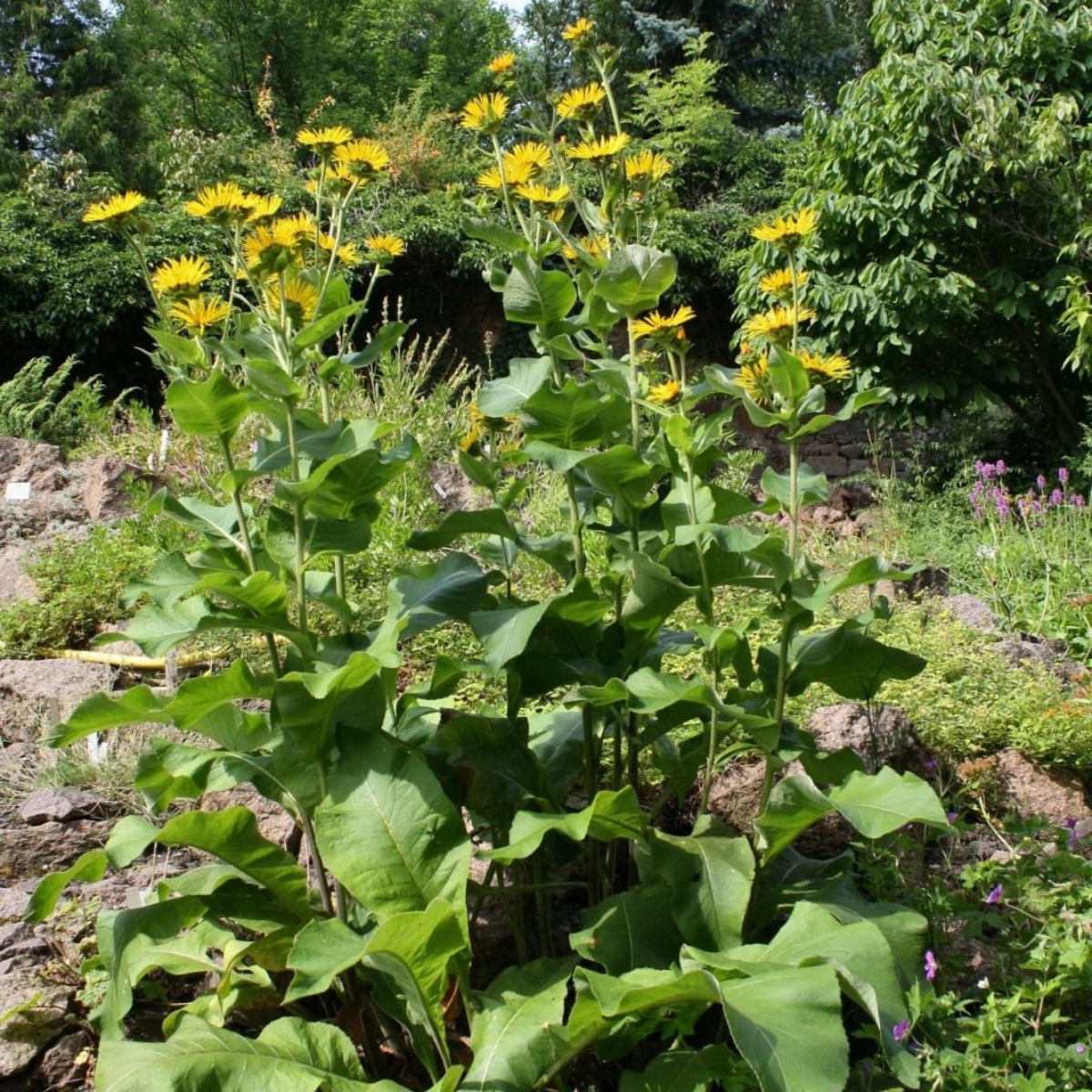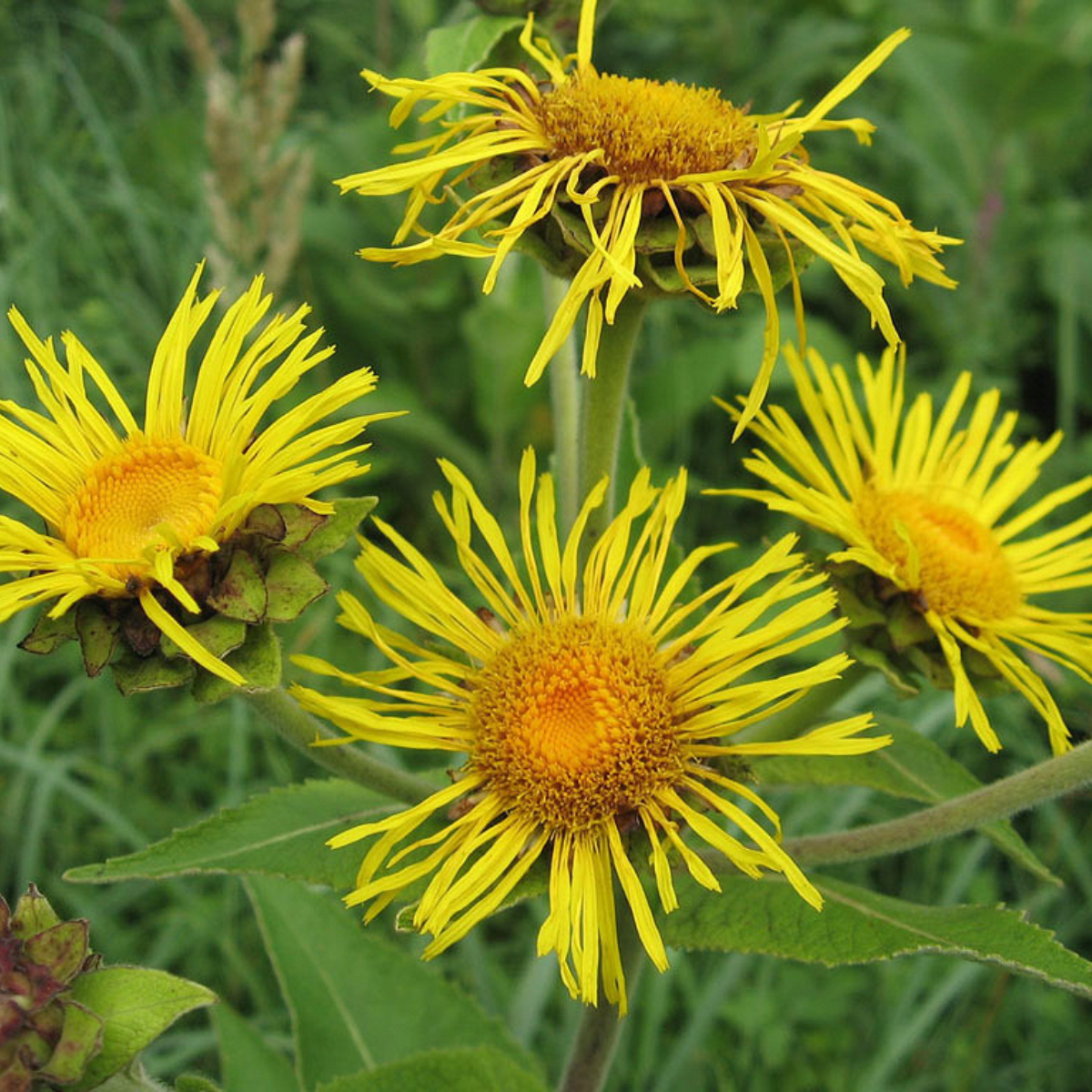Elecampane (Inula helenium)
General Description
Elecampane (Inula helenium) is a perennial medicinal herb known for its tall growth, bright yellow flowers, and historical use in traditional herbal medicine. Native to Europe and Asia, Elecampane has been cultivated for centuries for its therapeutic properties, particularly in respiratory health. It has been widely used in traditional medicine as a remedy for coughs, digestive ailments, and immune support. Its striking sunflower-like blooms and large, rough leaves also make it an attractive ornamental plant in gardens and meadows.
Plant Characteristics
Elecampane grows between 100 and 200 cm in height, producing sturdy, branching stems with large, lance-shaped, green leaves that can reach up to 50 cm in length. The plant blooms from mid to late summer, forming bright yellow, daisy-like flowers with thin, radiating petals. These flowers are highly attractive to pollinators such as bees and butterflies. Elecampane thrives in moist, well-drained soil and prefers full sun to partial shade.
Taste and Benefits
The root of Inula helenium is highly valued in herbal medicine for its warm, slightly bitter, and aromatic taste. It contains inulin, a prebiotic fiber that supports digestion, along with essential oils known for their expectorant and anti-inflammatory properties. Elecampane has traditionally been used to soothe respiratory conditions, promote lung health, and aid digestion. It has also been utilized in herbal liqueurs, teas, and natural syrups for medicinal and culinary applications.
Cultivation Recommendations
Elecampane thrives in rich, moist soil with good drainage and full sun to partial shade. Seeds should be sown in early spring or autumn, either directly in the garden or in seed trays for later transplantation. Lightly cover the seeds with soil and keep them evenly moist until germination occurs, usually within 10 to 20 days. Once established, Elecampane is a hardy, low-maintenance perennial that returns year after year. Regular division of the roots every few years helps maintain plant vigor.
Uses and Benefits
Elecampane is primarily grown for its medicinal properties, particularly in respiratory and digestive health. It is used in herbal medicine to prepare teas, tinctures, and syrups for cough relief and immune support. Additionally, its striking flowers make it an excellent choice for ornamental gardens, attracting beneficial pollinators. The deep roots of Elecampane also improve soil structure and contribute to ecological restoration projects.
Packaging
The seeds are carefully selected and packed in moisture-resistant packaging to ensure high germination rates and long-term viability.
Shipping Information
Orders are processed within 1–2 days and shipped worldwide, including across India. Delivery typically takes 1–2 weeks, depending on the destination.
Grow this valuable medicinal and ornamental herb with premium seeds from Deodar Seeds.
General Description
Elecampane (Inula helenium) is a perennial medicinal herb known for its tall growth, bright yellow flowers, and historical use in traditional herbal medicine. Native to Europe and Asia, Elecampane has been cultivated for centuries for its therapeutic properties, particularly in respiratory health. It has been widely used in traditional medicine as a remedy for coughs, digestive ailments, and immune support. Its striking sunflower-like blooms and large, rough leaves also make it an attractive ornamental plant in gardens and meadows.
Plant Characteristics
Elecampane grows between 100 and 200 cm in height, producing sturdy, branching stems with large, lance-shaped, green leaves that can reach up to 50 cm in length. The plant blooms from mid to late summer, forming bright yellow, daisy-like flowers with thin, radiating petals. These flowers are highly attractive to pollinators such as bees and butterflies. Elecampane thrives in moist, well-drained soil and prefers full sun to partial shade.
Taste and Benefits
The root of Inula helenium is highly valued in herbal medicine for its warm, slightly bitter, and aromatic taste. It contains inulin, a prebiotic fiber that supports digestion, along with essential oils known for their expectorant and anti-inflammatory properties. Elecampane has traditionally been used to soothe respiratory conditions, promote lung health, and aid digestion. It has also been utilized in herbal liqueurs, teas, and natural syrups for medicinal and culinary applications.
Cultivation Recommendations
Elecampane thrives in rich, moist soil with good drainage and full sun to partial shade. Seeds should be sown in early spring or autumn, either directly in the garden or in seed trays for later transplantation. Lightly cover the seeds with soil and keep them evenly moist until germination occurs, usually within 10 to 20 days. Once established, Elecampane is a hardy, low-maintenance perennial that returns year after year. Regular division of the roots every few years helps maintain plant vigor.
Uses and Benefits
Elecampane is primarily grown for its medicinal properties, particularly in respiratory and digestive health. It is used in herbal medicine to prepare teas, tinctures, and syrups for cough relief and immune support. Additionally, its striking flowers make it an excellent choice for ornamental gardens, attracting beneficial pollinators. The deep roots of Elecampane also improve soil structure and contribute to ecological restoration projects.
Packaging
The seeds are carefully selected and packed in moisture-resistant packaging to ensure high germination rates and long-term viability.
Shipping Information
Orders are processed within 1–2 days and shipped worldwide, including across India. Delivery typically takes 1–2 weeks, depending on the destination.
Grow this valuable medicinal and ornamental herb with premium seeds from Deodar Seeds.
Inula Helenium, Elecampane seeds - 50
- Brand: Deodar Seeds
- Product Code: HER92
- Availability: In Stock
₹342.00
Tags: Inula, Elecampane, seeds


